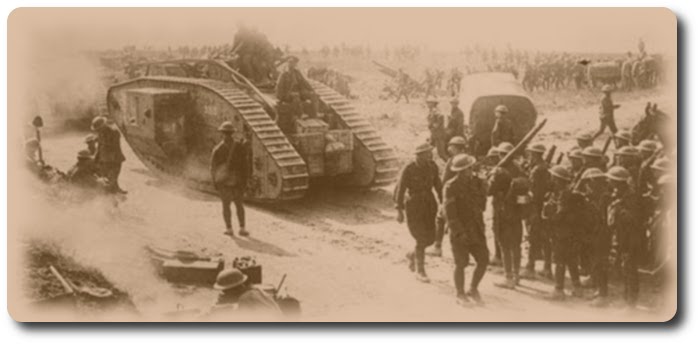Topic: CEF

Tank Characteristics and Limitations
Instructions for the Training of the Tank Corps in France, Reprint of a Pamphlet issued by Headquarters, Tank Corps, December 1, 1917, Bitish Army; [US] War Plans Division, July, 1918
General Characteristics and Limitations of the Weapon.
Tanks are mechanically propelled armored vehicles which are designed to accompany the infantry in the attack and to assist, by means of their fire, weight and moral effect, in destroying the enemy's strong points and overcoming his resistance. In defense they can be employed in counter attack either independently or in co-operation with infantry and can be used to cover the infantry in rearguard action.
As the speed of tanks is developed and their machinery perfected it is possible that their tactical employment may develop and that their r6le may become more independent.
At the present time, however, the role of tanks is to act in close co-operation with the infantry both in attack and defense and it is this role of tanks which is mainly considered in the following pages.
(i) The main characteristics of fighting tanks are their mobility, the security which they afford to their crews and their offensive power.
Mobility. Tanks, according to the type to which they belong, can move on the flat at a pace of 5 to 8 miles an hour; across country at a rate of 3 ¼ to 4 ½ miles an hour and in the night at an average pace of 2 to 3 miles an hour.
Tanks can cross all forms of wire entanglements. They crush down two paths in their passage through the wire, each of which is passable for infantry in single file. They can span a trench of considerable width, surmount an obstacle five feet high and climb slopes of 1 in 2.
Security. Tanks are proof against all bullets, shrapnel and most splinters a direct hit from any field gun, however, will usually put them out of action.
Offensive Power. Tanks can develop their fire power when in motion and consequently they are able to cover the advance of the infantry by a continuous fire. Heavy tanks are divided into two types male and female. The male carries 2 six-pounder guns and 4 machine guns, the female 6 machine guns. The medium tank carries 4 machine guns. The crews are armed with revolvers.
(ii) The Mark V. tank can travel for 18 miles and the medium "A" tank (Whippet) for 35 miles without taking in a further supply of petrol. This increase in the staying power of tanks materially adds to their fighting value, but their employment in active operations is still somewhat limited owing to the following reasons:
(a) The physical endurance of the crews cannot be counted upon after 12 hours in action.
(b) Tanks cannot cross swamps, streams or deep sunken roads, nor can they make their way through thick woods.
(c) The field of view from tanks is somewhat restricted. Objectives should, therefore, be easily recognizable and the routes to them straight- forward.
(d) Tanks cannot be depended upon to go over country which has been heavily shelled, but their capabilities in this respect are being I constantly improved.


